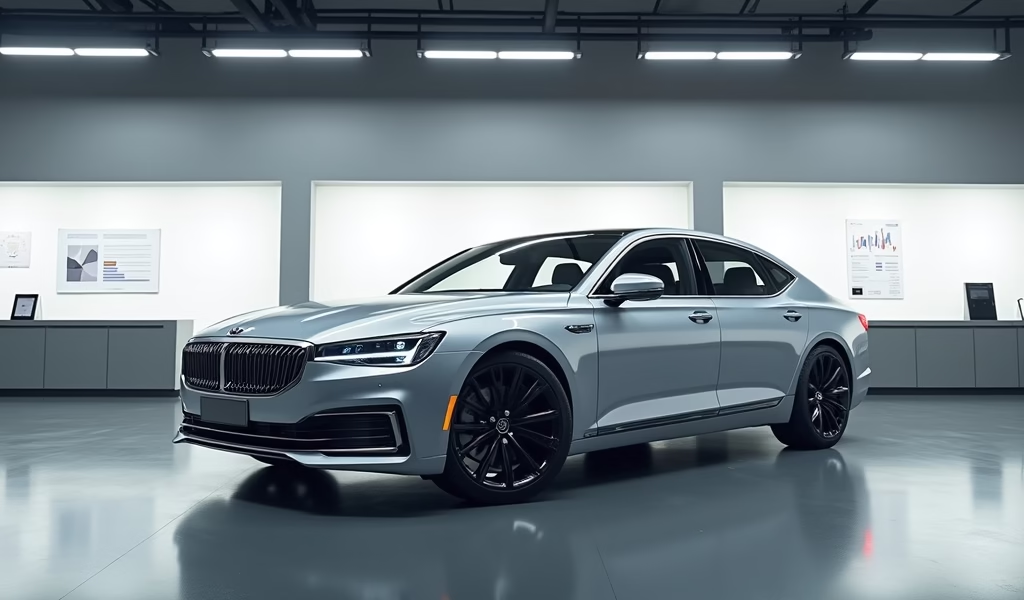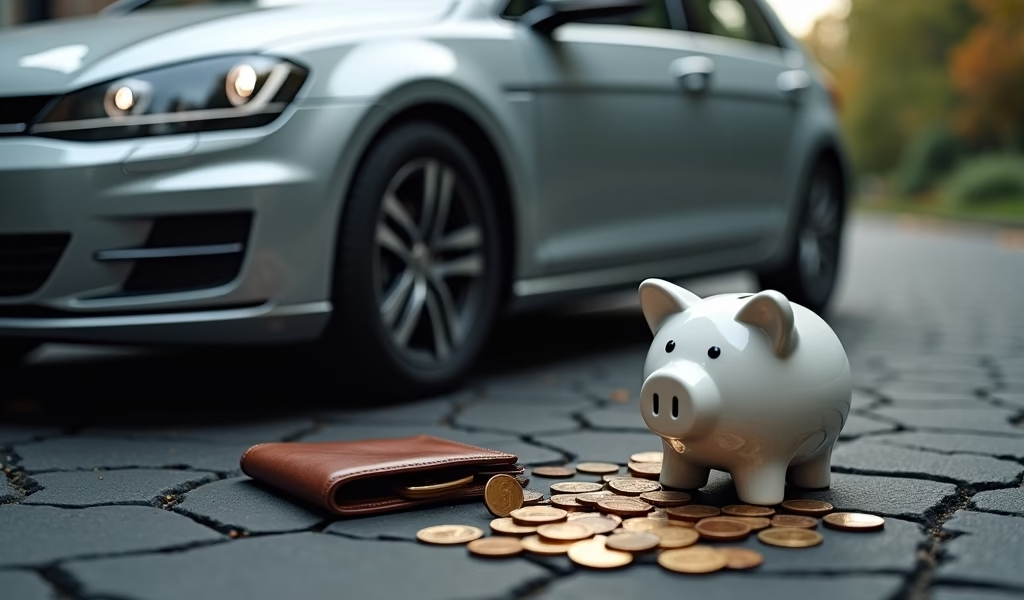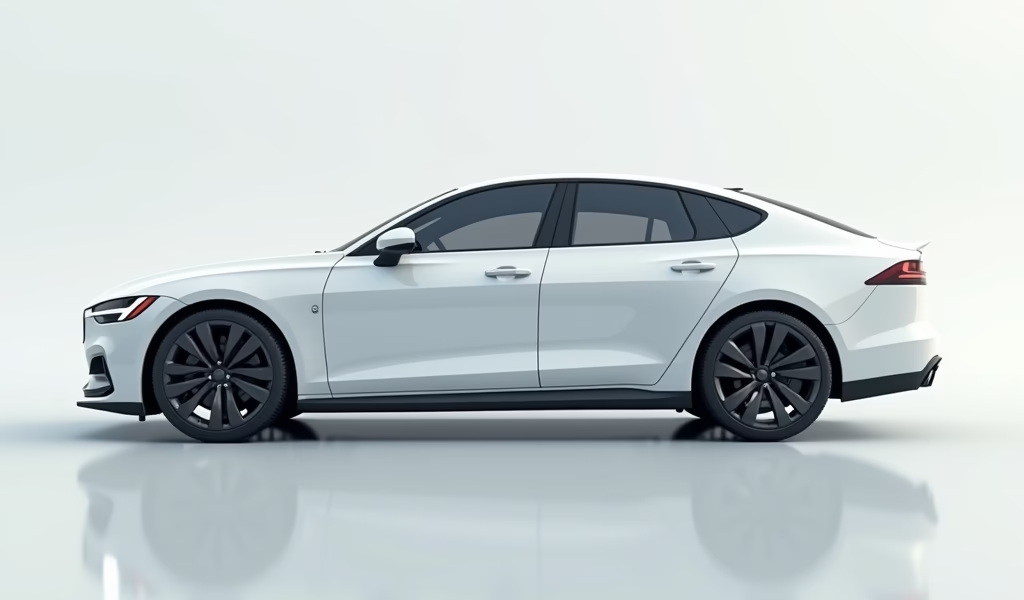Overview
This article provides five essential car financing tips: check your credit score before shopping, focus on total cost rather than monthly payments, get pre-approved before visiting dealerships, compare multiple financing options, and watch out for unnecessary add-ons and hidden fees. Following these strategies helps buyers secure better interest rates, avoid overpaying, and navigate dealership negotiations with confidence.
Table of Contents
- What is Car Financing? Understanding the Basics
- Tip #1: Check Your Credit Score Before Shopping
- Tip #2: Focus on the Total Cost, Not Just Monthly Payments
- Tip #3: Get Pre-Approved Before Visiting Dealerships
- Tip #4: Compare Multiple Financing Options
- Tip #5: Watch Out for Add-ons and Hidden Fees
- Navigating Car Financing with Confidence
- Frequently Asked Questions
What is Car Financing? Understanding the Basics
Car financing is essentially borrowing money to purchase a vehicle while paying it back over time with interest. Think of it as a way to drive the car today while paying for it gradually. When someone says, “I’m financing my new car,” they’re telling you they didn’t pay the full amount upfront but instead took out a loan to cover the purchase.
In today’s automotive market, financing has become the norm rather than the exception. According to the Federal Reserve, over 85% of new car purchases involve some form of financing. That’s because most folks don’t have $35,000+ sitting in their bank accounts to pay cash for a new vehicle.
The financing process involves several key components. First, there’s the principal amount—the actual cost of the car minus any down payment you make. Then there’s the interest rate, which is essentially what the lender charges you for the privilege of borrowing their money. Finally, there’s the loan term, which typically ranges from 36 to 84 months.
You have several options when it comes to where to get your financing:
- Dealerships: Convenient but not always offering the best rates
- Banks: Often competitive rates, especially for existing customers
- Credit unions: Typically feature lower interest rates and more flexible terms
- Online lenders: Provide convenience and sometimes work with challenging credit situations
Now that we’ve covered the basics, let’s dive into five essential tips that will help you navigate car financing like a pro. These insights come from years in the automotive industry and can potentially save you thousands of dollars.

Tip #1: Check Your Credit Score Before Shopping
Walking into a dealership without knowing your credit score is like driving blindfolded—dangerous and likely to end in disaster. Your credit score is essentially your financial report card that lenders use to determine how risky it might be to loan you money.
The difference between an excellent credit score (750+) and a fair one (600-650) can mean thousands of dollars over the life of your loan. Let me put this in perspective: on a $25,000 loan with a 60-month term, someone with excellent credit might secure a 3.5% interest rate, while someone with fair credit might pay 7.5%—that’s an extra $2,700 over the loan’s lifetime!
I recently worked with a customer named Mike who assumed his credit was “probably fine.” When he applied for financing at the dealership, he was shocked to discover his score was 615 due to a medical bill he didn’t know had gone to collections. Had he checked beforehand, he could have addressed the issue and potentially saved thousands.
Here’s what to do before you even think about test-driving that shiny new car:
- Get your free credit report from AnnualCreditReport.com
- Check your credit score through services like Credit Karma or your credit card provider
- Review your report for errors—they’re more common than you might think
- Dispute any inaccuracies you find
If your score isn’t where you’d like it to be, consider postponing your car purchase for a few months while you improve your credit. Pay down existing debt, make all payments on time, and avoid applying for new credit. Even a 50-point improvement could significantly lower your interest rate.
Remember, dealers can smell desperation and lack of preparation from a mile away. Knowing your credit score puts you in a position of power during negotiations. Have you checked your credit score recently? You might be surprised by what you find.
Tip #2: Focus on the Total Cost, Not Just Monthly Payments
“What monthly payment are you looking for?” This seemingly innocent question from the finance manager is actually one of the oldest sales tactics in the automotive industry. It shifts your focus from the total cost of the vehicle to whether you can afford a specific monthly amount.
I’ve seen countless customers get excited about a “low monthly payment” only to realize later they’re paying thousands more over the life of the loan. Here’s a real-world example: On a $30,000 loan at 5% interest, your monthly payment for 48 months would be about $691, with a total cost of $33,168. Stretch that to 72 months, and your payment drops to $483—but your total cost jumps to $34,776. That’s an extra $1,608 just to lower your monthly payment!
The longer your loan term, the more interest you’ll pay over time. While that 84-month loan might make that luxury SUV seem affordable, you’ll end up underwater on the loan (owing more than the car is worth) for years—a situation mechanics like me call “the upside-down car syndrome.”
Here’s how to stay focused on the numbers that matter:
- Calculate the total cost of ownership by multiplying the monthly payment by the number of months
- Add in your down payment and any fees
- Compare this total across different financing options
- Aim for the shortest loan term you can comfortably afford
A good rule of thumb is the 20/4/10 guideline: Make a 20% down payment, keep the loan term to 4 years or less, and ensure all automotive expenses (including loan payment, insurance, gas, and maintenance) don’t exceed 10% of your gross income.
Does stretching your budget for that dream car really make sense when you consider the total cost? Taking a step back to look at the big financial picture might lead you to a different decision—and save you thousands in the process.
Tip #3: Get Pre-Approved Before Visiting Dealerships
Walking into a dealership with pre-approved financing is like bringing your own toolbox to a repair shop—it gives you options and leverage. Pre-approval means a lender has already evaluated your credit history and agreed to loan you a specific amount of money at a set interest rate.
When you get pre-approved, you’re essentially turning yourself into a cash buyer from the dealership’s perspective. This shifts the power dynamic in your favor during negotiations. Instead of the dealer determining what rate you qualify for, you already have a solid offer in your pocket.
I remember helping my neighbor Jennifer with her car purchase last year. She got pre-approved through her credit union at 4.2%. When the dealership offered her 6.5% financing, she simply showed them her pre-approval letter. Magically, they “found” a special rate of 3.9%. That one simple step saved her over $2,000 over the life of her loan.
Here’s how to get pre-approved:
- Gather your documents (proof of income, employment verification, residence history)
- Apply with multiple lenders within a 14-day period (this counts as a single inquiry on your credit report)
- Compare offers based on APR, term, and total cost
- Choose the best option and get a pre-approval letter
- Bring this letter with you to the dealership
Most banks, credit unions, and online lenders offer pre-approval. The process typically takes just a few minutes online or a short visit to your local branch. Having that pre-approval in hand also helps you stick to your budget—you’ve already decided how much car you can afford before being tempted by that higher-trim model on the showroom floor.
Getting pre-approved for a car loan doesn’t obligate you to use that financing. If the dealership can genuinely offer a better deal, you’re free to take it. But without that pre-approval as leverage, you’ll never know if you’re getting the best rate possible.
Tip #4: Compare Multiple Financing Options
Would you buy the first car you test drive without checking out competitors? Probably not. The same principle applies to financing. Different lenders use different formulas to evaluate risk and set rates, so what looks like a rejection or high rate at one institution might be an approval with favorable terms at another.
I’ve seen too many car buyers accept the first financing offer they receive, leaving money on the table. My customer Rob was declined by his bank due to a previous bankruptcy, assumed he’d have to accept the dealership’s 12% interest rate, and nearly signed the papers. On my suggestion, he tried a local credit union that specialized in second-chance financing and qualified for 7.5% instead—saving him over $4,500 over the life of his loan.
When comparing financing offers, look beyond just the interest rate:
- Annual Percentage Rate (APR): This includes both interest and fees
- Loan term: Shorter is generally better, but ensure payments fit your budget
- Prepayment penalties: Can you pay off early without fees?
- Down payment requirements: More down typically means lower monthly payments
- Fees: Some lenders charge origination fees or application fees
Today’s digital age makes comparison shopping easier than ever. Many online lenders offer “soft pulls” that show potential rates without affecting your credit score. Websites like Bankrate or NerdWallet allow you to compare multiple offers side-by-side.
Don’t forget to check manufacturer incentives as well. Sometimes carmakers offer promotional rates (like 0% APR) that can’t be beaten by traditional lenders—though these often require excellent credit and might mean forgoing other rebates or discounts.
The extra hour you spend shopping around for financing could potentially save you hundreds or even thousands of dollars. Isn’t your hard-earned money worth that small investment of time?

Tip #5: Watch Out for Add-ons and Hidden Fees
Just when you think you’ve negotiated a great deal on your car and financing, you’re ushered into the finance office—and that’s where the real game begins. This is the moment when many buyers unwittingly add thousands to their loan amount through various add-ons and hidden fees.
As someone who’s seen both sides of the car business, I can tell you that the finance office is often where dealerships make their real profit. Those extended warranties, gap insurance, paint protection packages, and other add-ons typically carry hefty markups—sometimes 100% or more over what the dealership paid for them.
Last month, I helped my cousin review his purchase contract for a new sedan. The dealer had added nearly $3,200 in additional products without clearly explaining them: a $1,895 extended warranty, a $795 “paint protection package” (essentially a fancy wax job), and a $495 “anti-theft protection” that was just a window etching with a registration number.
Common add-ons to scrutinize include:
- Extended warranties: Often marked up significantly and may duplicate coverage you already have
- Gap insurance: Valuable if you’re putting little down, but much cheaper through your auto insurance provider
- Credit life/disability insurance: Pays off your loan if you die or become disabled, but regular life/disability insurance is typically more cost-effective
- Paint/fabric protection: Rarely worth the premium price when compared to DIY alternatives
- VIN etching: Can be done yourself for a fraction of the cost
Beyond add-ons, watch for these common fees:
- Documentation fees: These vary widely by dealer and state
- Advertising fees: Why should you pay for the dealership’s marketing?
- Dealer preparation fees: Often covering tasks already included in the manufacturer’s delivery preparation
- Market adjustment fees: Pure profit added to high-demand vehicles
Always ask for an itemized list of all charges before signing anything. Question fees you don’t understand or that weren’t previously disclosed. Remember that everything is negotiable, and you can always walk away if the deal doesn’t feel right.
A good strategy is to agree on the vehicle price and financing terms before even discussing add-ons. Then for each add-on offered, ask yourself: “Would I write a separate check for this right now if it weren’t being rolled into my financing?” If the answer is no, that’s your answer.
Navigating Car Financing with Confidence
Car financing doesn’t have to be the confusing, stressful experience that many make it out to be. By arming yourself with knowledge and following the five tips we’ve covered, you can walk into any dealership prepared to make smart financial decisions.
Remember that checking your credit score gives you power and preparation. Focusing on the total cost rather than monthly payments helps you understand the true impact on your finances. Getting pre-approved puts you in the driver’s seat during negotiations. Comparing multiple financing options ensures you’re getting the best deal possible. And watching out for add-ons and hidden fees protects you from unnecessary expenses.
I’ve seen too many people drive away in their dream car only to experience “buyer’s remorse” when they realize they’re locked into a financial arrangement that’s less than ideal. Don’t let that be you! Take your time, do your homework, and approach car financing with the same care you’d give to choosing the vehicle itself.
The most important tool in your car-buying toolkit isn’t a wrench—it’s knowledge. With these financing tips in your back pocket, you’re well-equipped to navigate the process with confidence and drive away with both a great vehicle and a financial arrangement you can live with for years to come.
What’s your experience with car financing? Have you used any of these strategies successfully in the past? Remember that being informed isn’t just about saving money—it’s about taking control of one of the biggest purchases you’ll make in your life.
Frequently Asked Questions
What exactly does financing a car mean?
Financing a car means borrowing money from a lender to purchase a vehicle and agreeing to pay it back over time with interest. Instead of paying the full amount upfront, you make regular monthly payments until the loan is completely paid off.
Is it better to finance through a dealership or a bank?
Neither option is universally better—it depends on your situation and current promotions. Dealerships offer convenience and sometimes access to manufacturer-subsidized rates, while banks and credit unions often provide lower interest rates and more transparent terms.
How much should I put down when financing a car?
A down payment of 20% is ideal as it helps offset depreciation and reduces the amount you need to finance. However, many lenders accept 10% down payments, and some offer zero-down financing options for qualified buyers.
Will financing a car build my credit?
Yes, financing a car can help build your credit if you make all payments on time. Auto loans add to your credit mix and payment history, which together make up about 50% of your credit score.
Can I pay off my car loan early?
Most car loans allow early payoff without penalties, though some may charge prepayment fees. Check your loan agreement for any prepayment penalty clauses before making additional payments or paying off your loan early.


Pingback: Is It Better to Lease or Finance a Car? - knowsyourcar.com